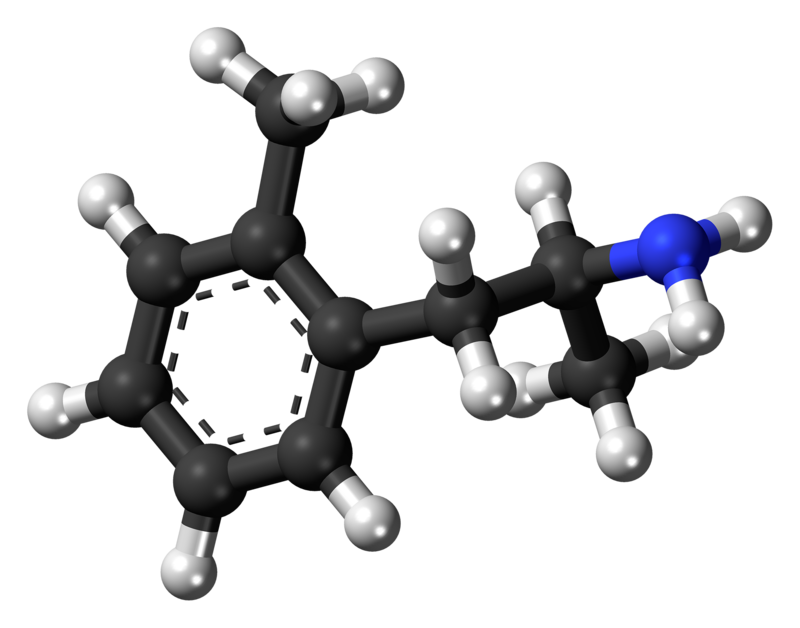Summary
Ortetamine (INN), recognized as 2-methylamphetamine, belongs to the amphetamine class of stimulant drugs. In animal tests for drug discrimination, it demonstrated a closer similarity to dextroamphetamine compared to 3- or 4-methylamphetamine, albeit with approximately one-tenth the potency of dextroamphetamine.
| Identifiers | |
|---|---|
| IUPAC name | |
| CAS Number | 5580-32-5 |
|---|---|
| PubChem CID | 115808 |
| ChemSpider | 103572 |
| UNII | VF4N11KKKR |
| CompTox Dashboard (EPA) | DTXSID30863569 |
| Chemical and physical data | |
| Formula | C10H15N |
| Molar mass | 149.237 g·mol−1 |

Legal status
On January 18, 2019, Sweden’s public health agency categorized 2-MA as a narcotic substance. Ortetamine, being an isomer of Methamphetamine, falls under the classification of a Schedule II Controlled Substance in the United States.

FAQ
- What is Ortetamine?
- Ortetamine, also known as 2-methylamphetamine, is a stimulant drug in the amphetamine class.
- How does Ortetamine work?
- Ortetamine acts as a central nervous system stimulant, similar to amphetamines. It affects the release and reuptake of certain neurotransmitters, such as dopamine and norepinephrine, in the brain.
- Is Ortetamine legal?
- The legal status of Ortetamine varies by country and jurisdiction. It’s essential to check your local laws and regulations to determine their legality in your area.
- What are the effects of Ortetamine?
- Ortetamine produces stimulant effects, including increased alertness, energy, and euphoria. It may also lead to side effects such as increased heart rate, elevated blood pressure, and insomnia.
- Is Ortetamine safe to use?
- The safety of Ortetamine is a subject of concern. Like other amphetamine derivatives, it may have potential health risks and side effects. Its use should be cautiously approached, and consulting with a healthcare professional is advisable.
- Is Ortetamine addictive?
- Stimulant drugs like Ortetamine have the potential for addiction and dependence. Continued misuse can lead to tolerance and withdrawal symptoms.
- What are the legal implications of Ortetamine use?
- In some countries, Ortetamine is classified as a controlled substance due to its stimulant properties and potential for abuse. Possession, distribution, or sale of Ortetamine can result in legal consequences.
- Can Ortetamine be used for medical purposes?
- Unlike some amphetamines that have medical applications, Ortetamine is not commonly used for medical purposes and is more associated with recreational use.
- Are there any known risks or side effects of Ortetamine?
- Common side effects of Ortetamine may include increased heart rate, hypertension, anxiety, insomnia, and potential mood disturbances. Prolonged or high-dose use may lead to more severe health issues.
- Where can I find more information about Ortetamine?
- For detailed information about Ortetamine, its effects, legal status, and potential health risks, consult reputable sources, medical professionals, or relevant government agencies. Always prioritize safety and responsible use.
References
- Higgs RA, Glennon RA (December 1990). “Exploring the Stimulant Properties of Amphetamine Analogs with Methyl Rings”. This study delved into the stimulant characteristics of amphetamine analogs containing ring-methyl substitutions. It was published in the journal Pharmacology, Biochemistry, and Behavior (Vol. 37, Issue 4, pp. 835–7). DOI: 10.1016/0091-3057(90)90571-x. PMID: 2093186. S2CID: 40060139.
- “Ny Klassificering av Ämnen som Narkotika eller Hälsofarlig Vara” (in Swedish). On January 18, 2019, Sweden’s Public Health Agency, known as Folkhälsomyndigheten, introduced new classifications for substances as narcotics or health-endangering materials.